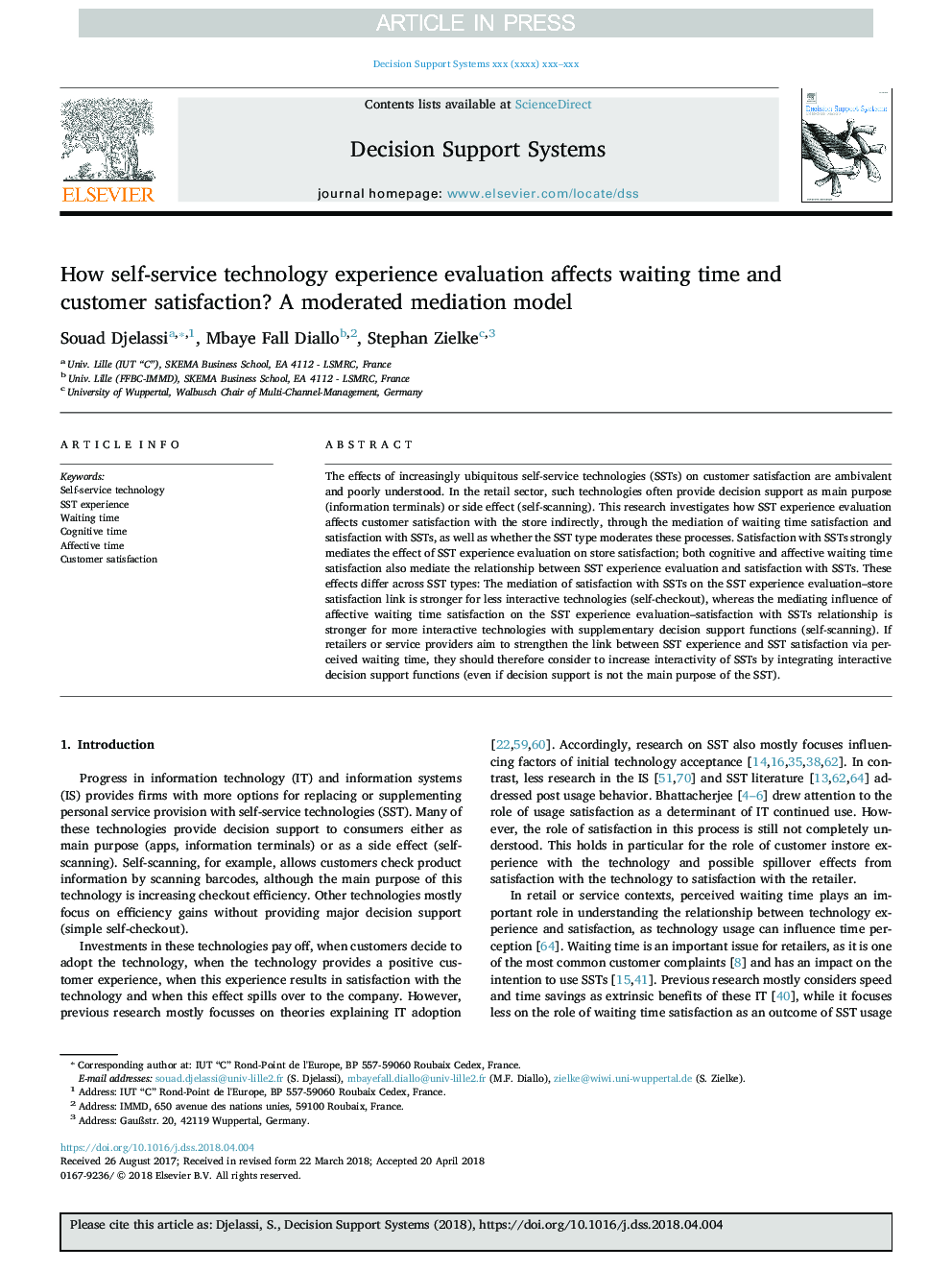| Article ID | Journal | Published Year | Pages | File Type |
|---|---|---|---|---|
| 6948336 | Decision Support Systems | 2018 | 10 Pages |
Abstract
The effects of increasingly ubiquitous self-service technologies (SSTs) on customer satisfaction are ambivalent and poorly understood. In the retail sector, such technologies often provide decision support as main purpose (information terminals) or side effect (self-scanning). This research investigates how SST experience evaluation affects customer satisfaction with the store indirectly, through the mediation of waiting time satisfaction and satisfaction with SSTs, as well as whether the SST type moderates these processes. Satisfaction with SSTs strongly mediates the effect of SST experience evaluation on store satisfaction; both cognitive and affective waiting time satisfaction also mediate the relationship between SST experience evaluation and satisfaction with SSTs. These effects differ across SST types: The mediation of satisfaction with SSTs on the SST experience evaluation-store satisfaction link is stronger for less interactive technologies (self-checkout), whereas the mediating influence of affective waiting time satisfaction on the SST experience evaluation-satisfaction with SSTs relationship is stronger for more interactive technologies with supplementary decision support functions (self-scanning). If retailers or service providers aim to strengthen the link between SST experience and SST satisfaction via perceived waiting time, they should therefore consider to increase interactivity of SSTs by integrating interactive decision support functions (even if decision support is not the main purpose of the SST).
Related Topics
Physical Sciences and Engineering
Computer Science
Information Systems
Authors
Souad Djelassi, Mbaye Fall Diallo, Stephan Zielke,
